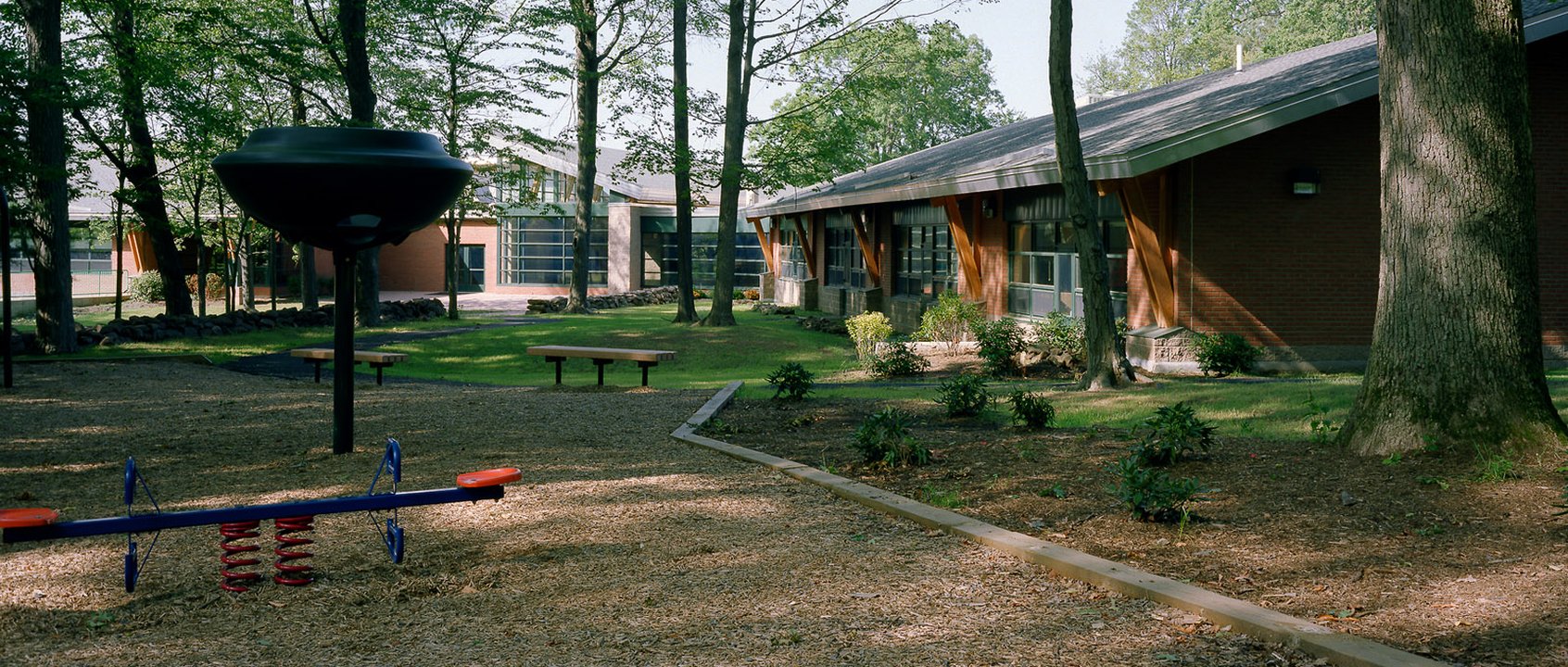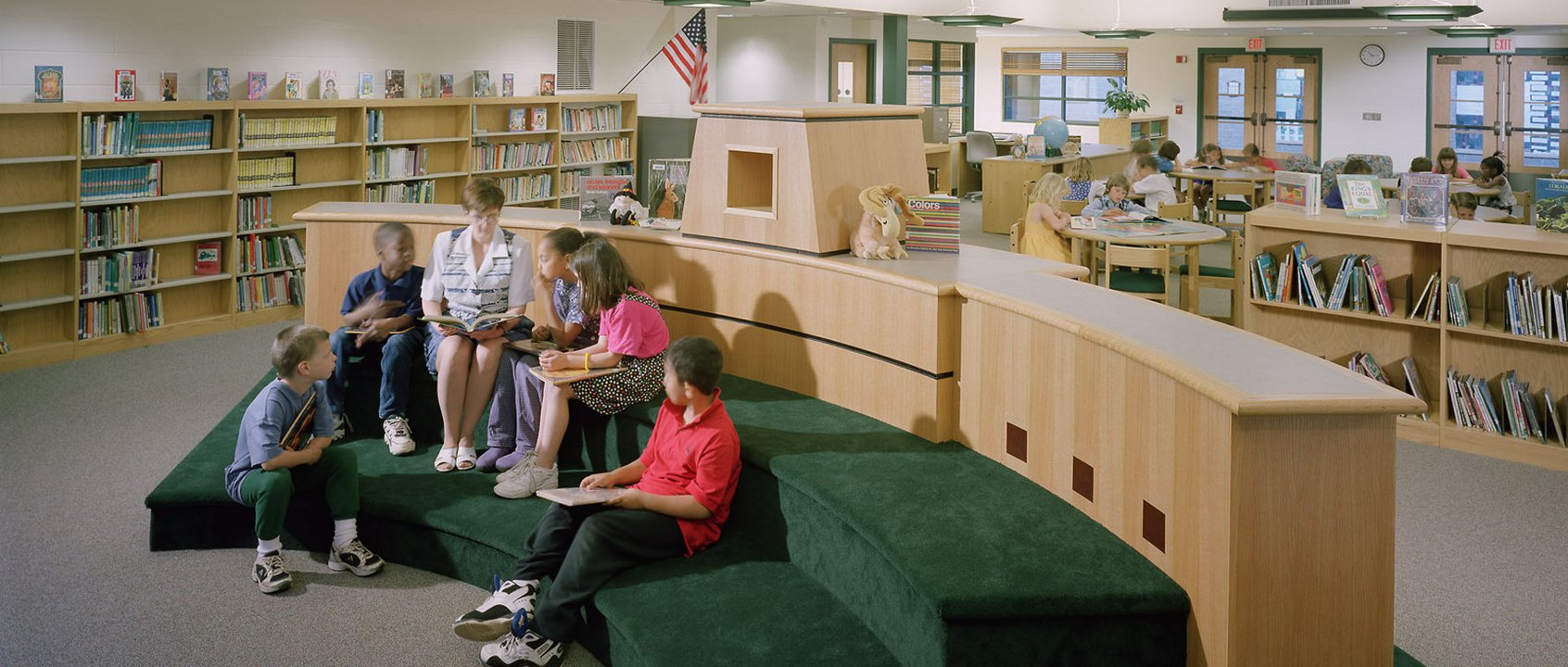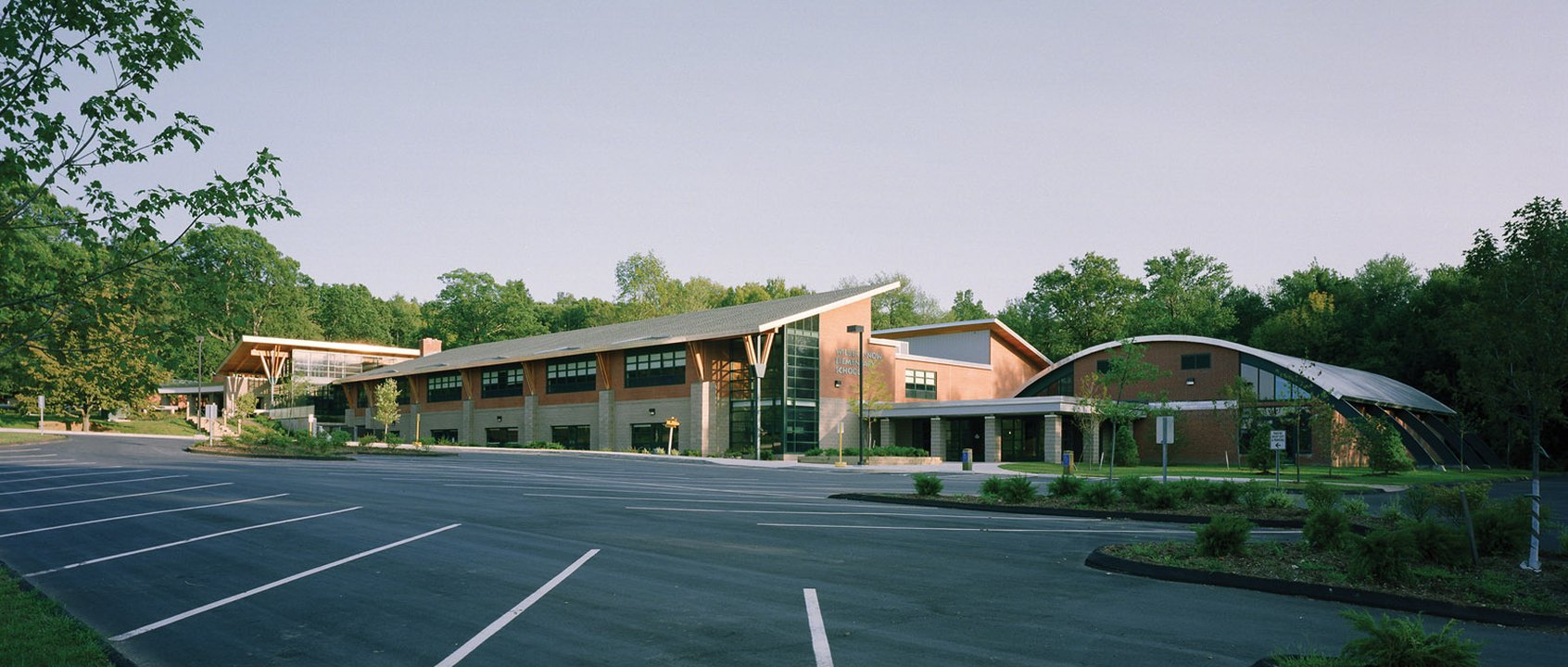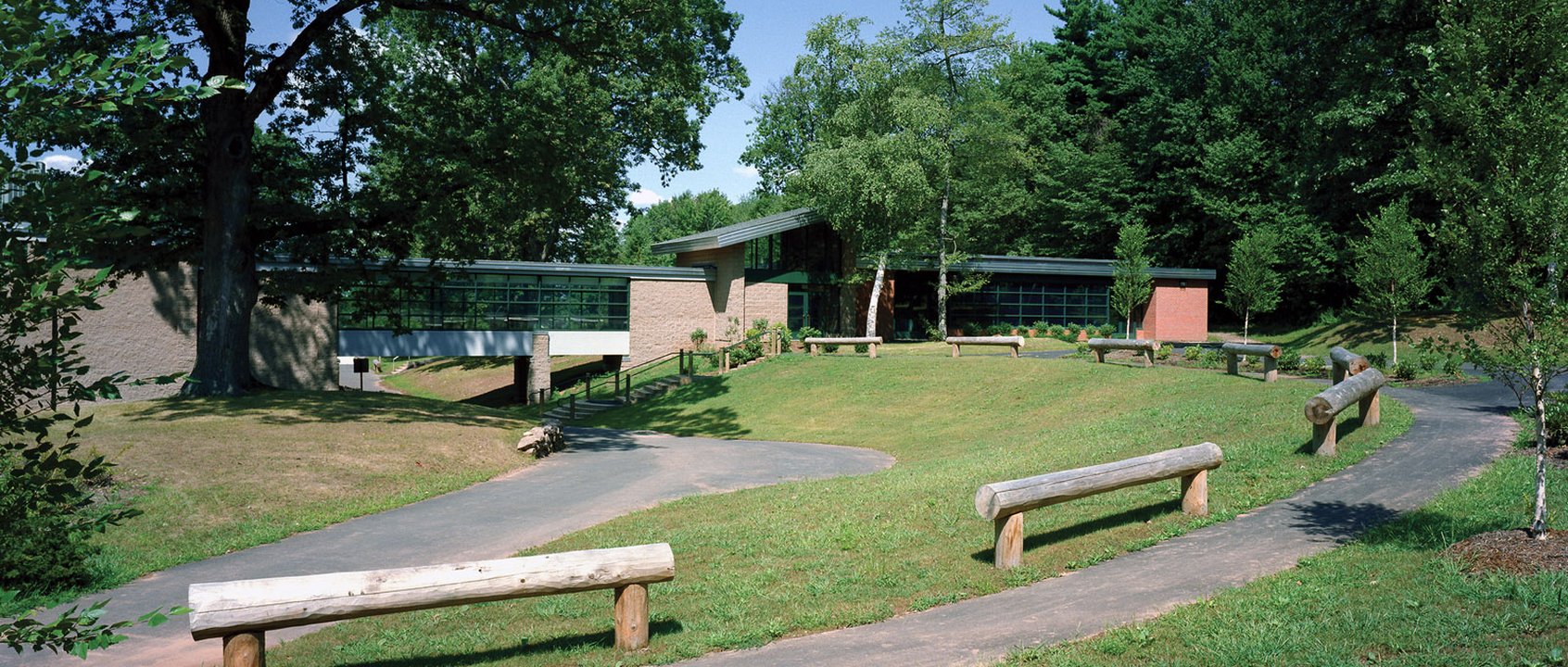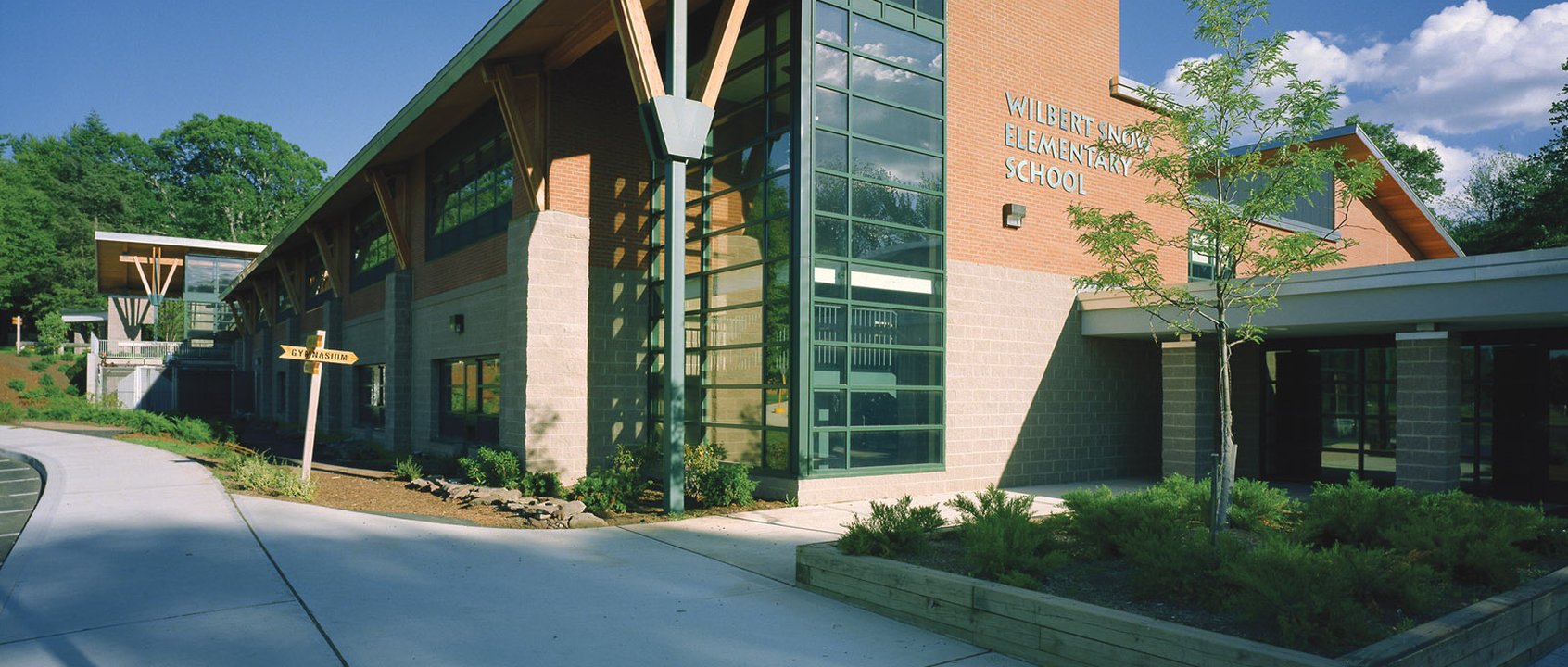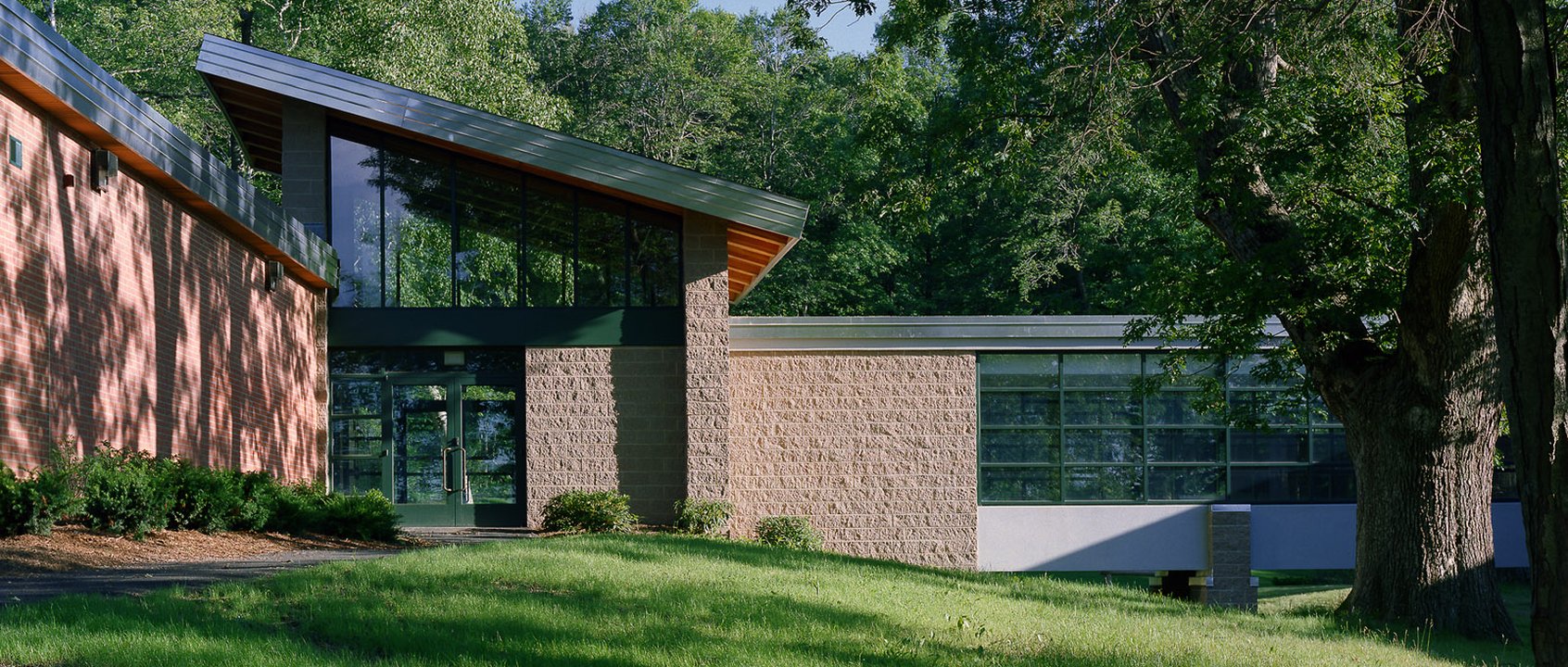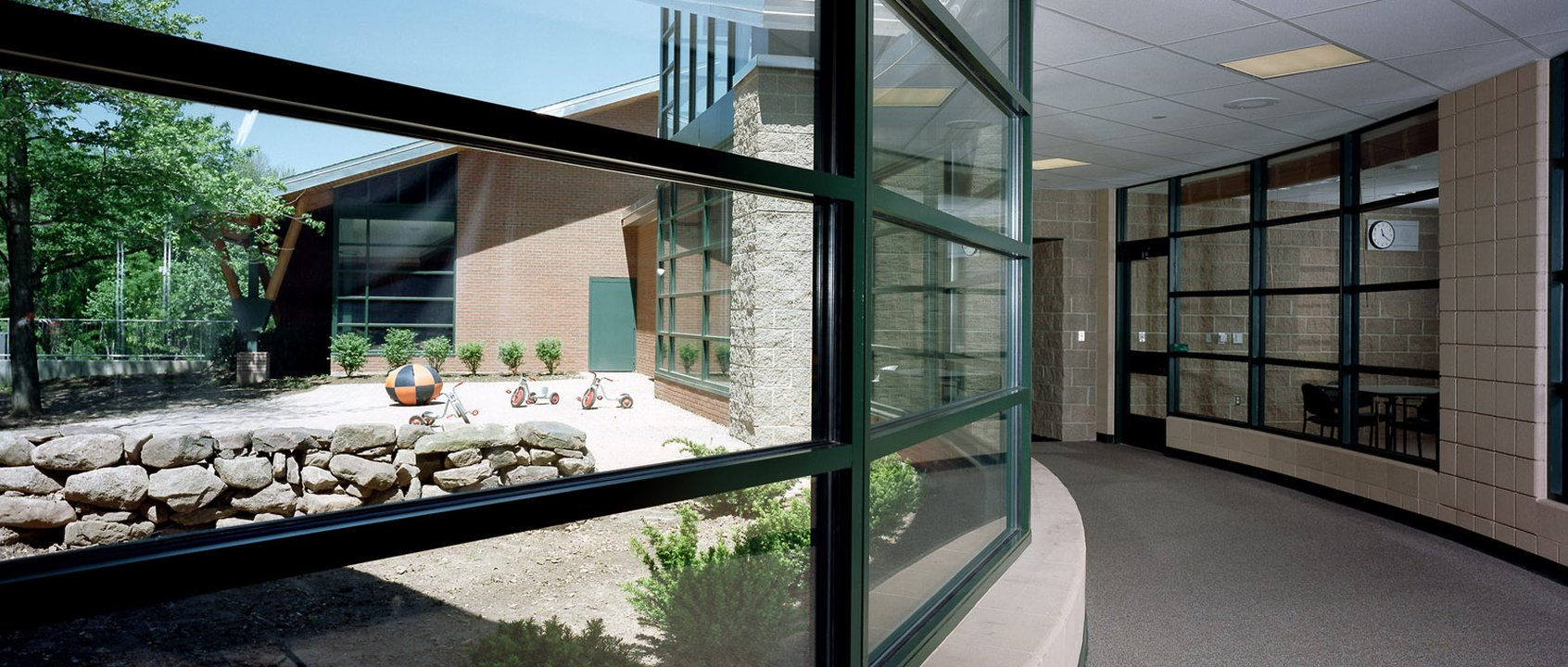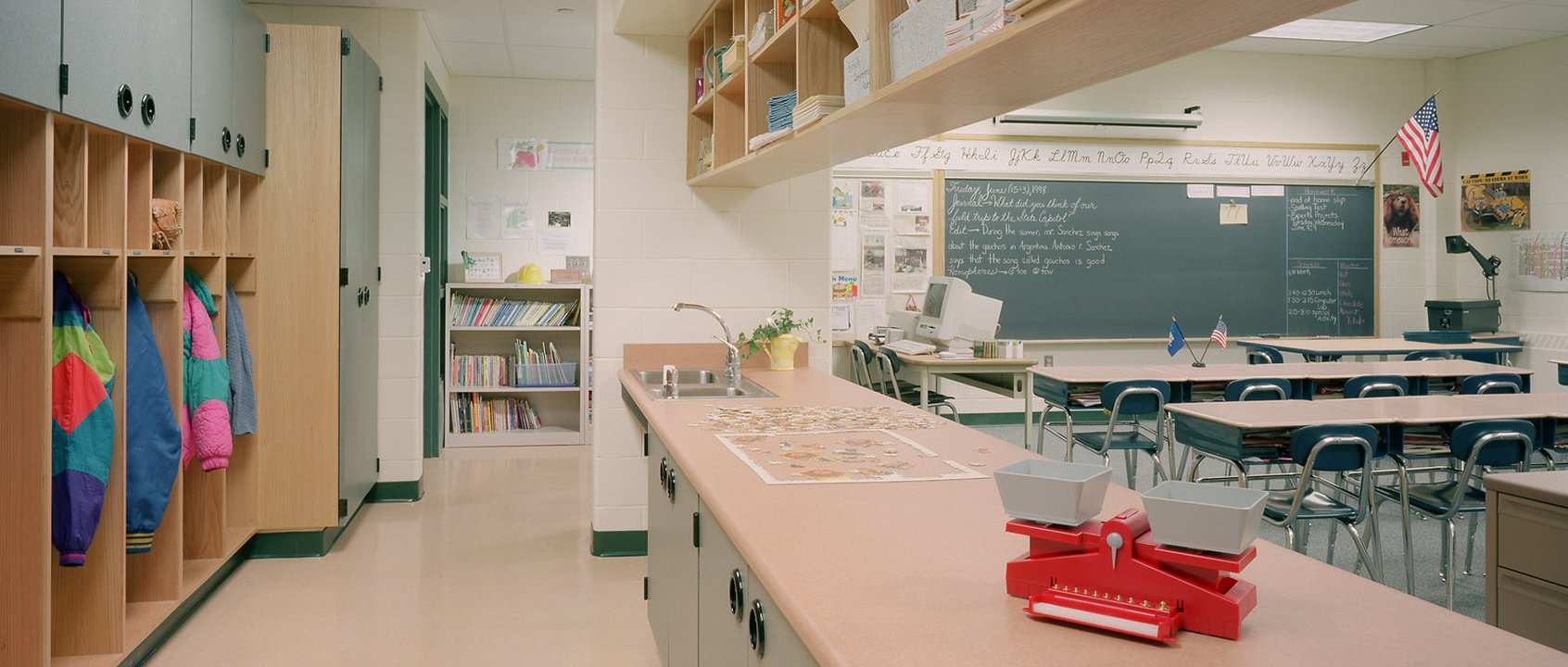There is no building in New England that is more beautiful, which means this is as good as it gets.
-Theodore Sergi, Connecticut State Education Commissioner at the Snow School ribbon cutting
Background and Context
Middletown is a diverse New England community of nearly 48,000 residents located along the Connecticut River. Originally settled in the early 17th century, the city is a vibrant and eclectic community known for 350 years of innovation in maritime trade, commerce, manufacturing and the arts.
Named for the educator, poet and former Governor of the State of Connecticut, C. Wilbert Snow, the most distinguishing feature of the existing Snow School was its unusual decentralized configuration. Uncommon in the northeast United States, this “California-style” campus plan featured core areas arrayed along the bus loop/drop off and small detached grade-level classroom buildings set back into a heavily wooded site. In order for these PreK-5 students to engage in all-school programs, students and teachers were required to travel to these main buildings, frequently during inclement weather. JCJ Architecture was retained to develop a plan that would reuse the existing gymnasium and auditorium – and link these with new classrooms - - to form a continuous structure.


site before

site after

Design Response
The team drew inspiration for the school’s organization and aesthetics from the unique beauty and early history of the site. Sometime during the Revolutionary War, General George Washington is reported to have traveled along a north-south pathway known as “Dolly Lane.” With the remains of the path still intact, the team chose to embrace this as a key principal around which to organize the new school. Configuring a new entry on this north/south axis, the team relocated the cafeteria to one of the original classroom buildings and took advantage of a change to link up three of the existing building forms and organize a two-level wing for Grades 1-5 and a single level wing for Grades PK-K. Continuing the “Dolly Lane” concept out to the site, an existing stone wall was restored and now runs along a path extends out from the school, past a grove of trees and wooded play area to an outdoor education center. A paved pathway takes the form that would have been historically accurate – two parallel tracks the distance between two wagon wheels. From the outdoor education center, the site extends further and borders the Wadsworth Historic District and Park.


The design team envisioned a place that would evoke an informal and playful “camp” aesthetic. As students approach the school they are greeted by a collection of forms - shed roofs with large overhangs, exposed glue-lam beams and dramatic branching columns. Directional signage, log “benches,” informal railings and curved walkways support the sense of the school as a special destination. On the interior, great care was taken to introduce transparency – to maintain the special connection of students to the natural surroundings. Whether traveling between spaces or within the classroom, large windows allow students to experience the site - - now with the ability to stay out of the elements.



Results
There is no building in New England that is more beautiful, which means this is as good as it gets.”
-Theodore Sergi, Connecticut State Education Commissioner at the Snow School ribbon cutting
“Not in my wildest dreams did I envision the nicest school in New England being built in Middletown.”
- David Larson, Middletown Superintendent of Schools at Snow School ribbon cutting
“My name is Austin Raymond and thank you for hiring all those people to build this fantastic school. I think that you guys are the best ever. This building couldn’t be any better. No one should be sad about the building. It’s the best I’ve seen. It’s better than any other school in the world.
- Austin Raymond, Snow School student in a letter to the School Building Committee
“The things that I like about the new Wilbert Snow School are the desks and the chairs, the rooms are larger, the windows can open, we have two hooks for our things, the bathrooms are more cleaner, the sinks don’t leak, and we don’t have to go outside for lunch. I just want to thank everyone for making the new building and helping to make it. Before we were in an okay school, but the students were excellent. And now the school matches the students!”
- Trisha Johnson, Snow School student in a letter to the School Building Committee
“Thank you for designing this school. I like it a lot. My favorite thing that you were able to fix is the gym. The cafeteria and the rugs are beautiful. I like how you put in an upstairs and downstairs. I like the hall markers, they are so nice. The cubbies in our classroom are nice too. I also like the windows. I’m thrilled we don’t have to walk in the mud anymore.
- Trisha Johnson, Snow School student in a letter to JCJ Architecture
“Thank you for designing this school. It’s simply beautiful!!! I like everything in it better than the old school, like walking across the sky walk. I think the men did a great job, and you designed it perfectly!!! One think I really like about this school is you don’t have to go outside to get to different classes. It’s not dirty like the old school was. We now have the carpets and cubbies too. I LOVE THIS SCHOOL!!!
- Kristen Giuffridda, Snow School student in a letter to JCJ Architecture

Recognition:
Crow Island School Citation,
American School & University Magazine, 1999
Citation Award, Exemplary Learning Environment Competition, American Institute of Architects
Design Award,
American Institute of Architects (AIA) Connecticut
Citation for Design,
American Association of School Administrators, 1999
Architectural Record, Building Types Study,
November 1999

